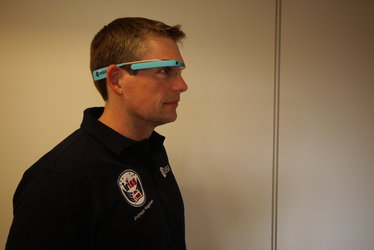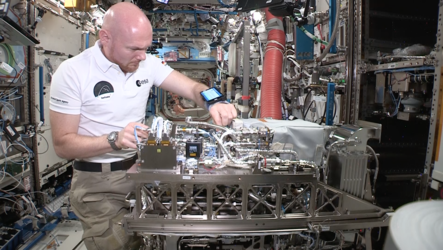Accept all cookies Accept only essential cookies See our Cookie Notice

About ESA
The European Space Agency (ESA) is Europe’s gateway to space. Its mission is to shape the development of Europe’s space capability and ensure that investment in space continues to deliver benefits to the citizens of Europe and the world.
Highlights
ESA - United space in Europe
This is ESA ESA facts Member States & Cooperating States Funding Director General Top management For Member State Delegations European vision European Space Policy ESA & EU Space Councils Responsibility & Sustainability Annual Report Calendar of meetings Corporate newsEstablishments & sites
ESA Headquarters ESA ESTEC ESA ESOC ESA ESRIN ESA EAC ESA ESAC Europe's Spaceport ESA ESEC ESA ECSAT Brussels Office Washington OfficeWorking with ESA
Business with ESA ESA Commercialisation Gateway Law at ESA Careers Cyber resilience at ESA IT at ESA Newsroom Partnerships Merchandising Licence Education Open Space Innovation Platform Integrity and Reporting Administrative Tribunal Health and SafetyMore about ESA
History ESA Historical Archives Exhibitions Publications Art & Culture ESA Merchandise Kids Diversity ESA Brand CentreLatest
Space in Member States
Find out more about space activities in our 23 Member States, and understand how ESA works together with their national agencies, institutions and organisations.
Science & Exploration
Exploring our Solar System and unlocking the secrets of the Universe
Go to topicAstronauts
Missions
Juice Euclid Webb Solar Orbiter BepiColombo Gaia ExoMars Cheops Exoplanet missions More missionsActivities
International Space Station Orion service module Gateway Concordia Caves & Pangaea BenefitsLatest
Space Safety
Protecting life and infrastructure on Earth and in orbit
Go to topicAsteroids
Asteroids and Planetary Defence Asteroid danger explained Flyeye telescope: asteroid detection Hera mission: asteroid deflection Near-Earth Object Coordination CentreSpace junk
About space debris Space debris by the numbers Space Environment Report In space refuelling, refurbishing and removingSafety from space
Clean Space ecodesign Zero Debris Technologies Space for Earth Supporting Sustainable DevelopmentLatest
Applications
Using space to benefit citizens and meet future challenges on Earth
Go to topicObserving the Earth
Observing the Earth Future EO Copernicus Meteorology Space for our climate Satellite missionsCommercialisation
ESA Commercialisation Gateway Open Space Innovation Platform Business Incubation ESA Space SolutionsLatest
Enabling & Support
Making space accessible and developing the technologies for the future
Go to topicBuilding missions
Space Engineering and Technology Test centre Laboratories Concurrent Design Facility Preparing for the future Shaping the Future Discovery and Preparation Advanced Concepts TeamSpace transportation
Space Transportation Ariane Vega Space Rider Future space transportation Boost! Europe's Spaceport Launches from Europe's Spaceport from 2012Latest

Mobile upgrade
Thank you for liking
You have already liked this page, you can only like it once!
Astronauts have a wealth of knowledge to absorb before they can fly to the International Space Station: from piloting spacecraft to conducting spacewalks and maintaining one of the most advanced structures ever built by humans.
Having intricate knowledge of every component is impossible, so astronauts do regular refresher trainings while in space and ground control helps during complex operations.
Detailed checklists with step-by-step instructions are sent to the Space Station’s computers for the astronauts to follow, but this has a large drawback: reading and clicking on to the next step in the instructions requires that the astronaut has to let go of any tools and divert attention to the detailed procedure list.
ESA is working on the MobiPV mobile procedure viewer, which allows ground control to see what the astronauts sees and the wearer to work hands-free. MobiPV has been tested underwater and in space using commercially available parts but, just like mobile phones, the engineers are constantly upgrading the system to do more.
Here ESA astronaut Paolo Nespoli has set up the latest version of MobiPV to check the system is working as planned.
This model allows multiple ground control stations to watch the video streamed from a camera in the glasses – useful for tasks that involve researchers and engineers from different countries as the International Space Station is run by USA, Japan, Russia, Canada and ESA.
The download and upload speed has been improved, while the software was upgraded to allow for situations when there is no direct contact with ground control, preparing for missions further afield such as on the Moon or Mars.
Unlike with mobile phones, any updates to MobiPV cannot cause unintended effects – performing any task in space allows no room for error. A lost connection or problem with the system cannot be allowed to impair the astronaut in any way, so MobiPV is robust.
Paolo is set to use MobiPV to maintain a water pump in Europe’s Columbus space laboratory.
-
CREDIT
ESA -
LICENCE
ESA Standard Licence

Andreas with MobiPV

Testing mobiPV

Follow instructions

Horizons mission – Installing life-support system wi…















 Germany
Germany
 Austria
Austria
 Belgium
Belgium
 Denmark
Denmark
 Spain
Spain
 Estonia
Estonia
 Finland
Finland
 France
France
 Greece
Greece
 Hungary
Hungary
 Ireland
Ireland
 Italy
Italy
 Luxembourg
Luxembourg
 Norway
Norway
 The Netherlands
The Netherlands
 Poland
Poland
 Portugal
Portugal
 Czechia
Czechia
 Romania
Romania
 United Kingdom
United Kingdom
 Slovenia
Slovenia
 Sweden
Sweden
 Switzerland
Switzerland
























